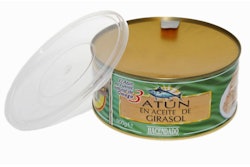
It is also part of ISO 22000 standards. One of the objectives is to align food safety and quality standards to reduce food recalls and improve food safety and protection through the global supply chain. This standard has been around for about 10 years but is becoming more common in the last couple of years in the United States.
At Clemson University, we’ve experienced an increased number of food companies requesting information on shelf-life testing as well as performing shelf-life testing. Third-party validation of product shelf life is necessary if companies do not have the facilities for shelf-life testing internally. Another reason for third-party testing is that the results are considered more valid when they come from a third-party test lab, which is apparently a positive for GFSI audits. Since more people are considering doing their own shelf-life testing or looking for a test site, it is a good idea to understand the basics of shelf-life testing in order to know what to ask for and look for in a good test.
Shelf-life testing is a process for food companies that was originally adopted by the medical and pharmaceutical industry. There are several theories of how shelf life should be measured and/or calculated, but the generally accepted method is the Q10 method. This means that for every 10°C incremental increase, the reaction rate doubles. For example, if room temperature is 23°C and the shelf life of your product at room temperature is 2 years, you could store your product at 43°C for 6 months to validate the shelf life.

























